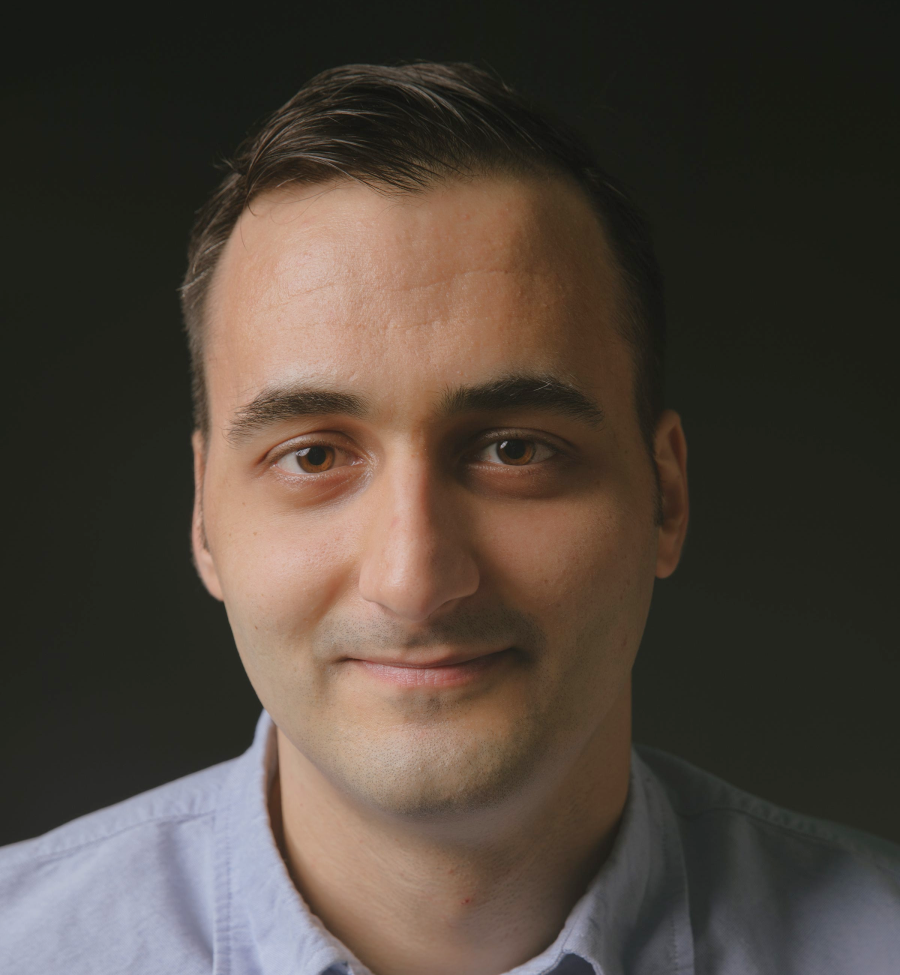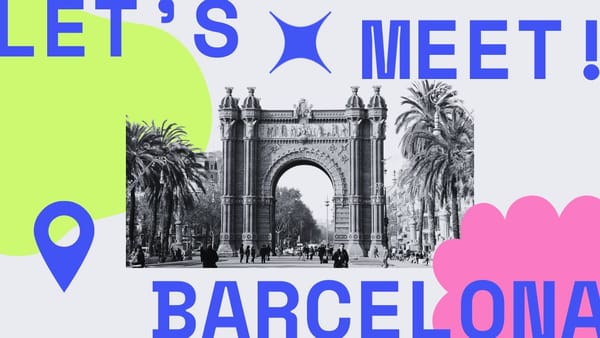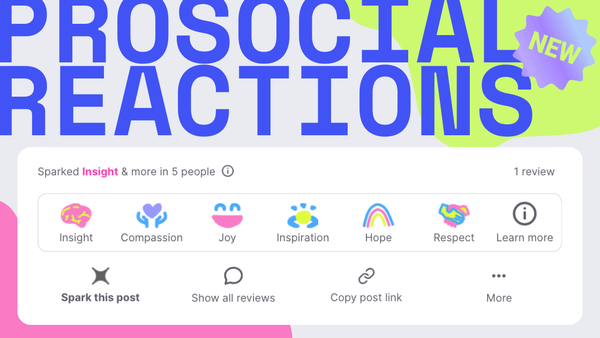Meet John Fallot
John is a UX & graphic designer and Co-Founder of the Prosocial Design Network.

John Fallot is a user experience and graphic designer based in New York. 🇺🇸 He co-founded the Prosocial Design Network in 2019 to promote evidence-based design practices that bring out the best in human nature online.
What does the Prosocial Design Network do?
In a nutshell:
- We look into how to design social media to be less of a dumpster fire.
- We connect design technologists with academics in behavioral science and trust & safety.
- We curate interventions in our library.
What are some of the key principles that underpin prosocial design?
We’re still working on— and might still be a ways from — identifying and vouching for a broader set of generalizable patterns across interventions. That said, we recently started using New Public’s Civic Signals Framework to help contextualize where interventions align in promoting civic health.
What technological advancements do you believe have the greatest potential to influence prosocial design?
As a logistical matter, I’m interested in how AI services — like elicit.com — can help locate possible prosocial design interventions we might have overlooked. And, for users, I think strategically employed data visualizations—ones that orient users in relation to their peers and the information they consume—will prove quite useful (e.g., pol.is). There may also be some insights that emerge from what Apple is calling spatial design, but I’m more reticent on that.
What steps can individuals, including designers, take to promote prosocial design and counteract hate and misinformation?
One thing we’ve observed over the past year is that most companies that value Trust & Safety do want to do better in terms of conversational health. The problem for them is that they just lack clear guidance, or they don’t have objective criteria with which to justify prosocial design decisions internally. The Prosocial Design Network, through being a resource, is aiming to fix that over the long term.
If your company has a Trust & Safety division or similar, work with them through the given channels, visit our library of interventions, and feel free to reach out to us with your thoughts and suggestions.
What initially sparked your interest in your field?
In 2016, I was originally a graphic designer based in New York City. I took a course at the School of Visual Arts called ‘Feeling of Design’ — taught by the truly incredible Sue Walsh of SYP. During one exercise, she had us compare several fonts and how it was found that more humanist serif fonts — like Baskerville — were considered more trustworthy than sans serif ones — like Helvetica. Given that most social networks use sans-serif fonts, I wondered if there might be a connection between those user interfaces and the growing animosity of online spaces. The rest happened fairly organically.
What's your biggest question at the moment?
Currently, in the Prosocial Design context, I’m trying to figure out where it can be applied and where it’s just better to go analog.
Now, what do I mean by that? I — personally — think that computers, smartphones, and the like will probably continue to be used and optimized, at least for the next decade, and we should improve designs for those interfaces to be more prosocial. But is there a line beyond which innovations become farcical, if not grift?
Will augmented reality, spatial design, and the Metaverse be ways for people to communicate daily? I’m increasingly skeptical of that.
For one thing, I suspect that mobile phones will continue to subsume the activities of all adjacent handheld devices through apps — consider what’s happened with cameras, compasses, measuring sticks, &c.
For another, I get the sense that there’s a growing societal longing for offline, social spaces that don’t involve screens or Internet access of any kind: to exist as adults like our parents were once in a time before the Internet with all its delays, grit, and uncertainty.
And if so, why wear a headset to visit a virtual space that evokes the 1980s when you can go to a real, tangible space that evokes the 1980s?
For prosocial design, it might be that sometimes, the only way to have a conversation is in person. That should be obvious, yet nowadays, there seems to be this stubborn urge to replace that fact with tech. I’m curious if prosocial design, in developing new ways to clarify online communications, needs to acquiesce to that fact, too.
What work are you most proud of?
Before the Prosocial Design Network — for which my pride is a given — I did design work for the browser game deeeep.io from 2017 to around 2020. It’s best described as an online aquatic wildlife battle simulator: teens like it. I was down on my luck early in 2017 and came across a Let’s Play video of the game via YouTube. I figured I’ve got design skills, and the designs are simple enough — mostly rounded rectangles with beady eyes — so why not make some contributions?
And so I did. The designs were added, and that got the community excited. I started getting questions about obscure aquatic creatures like frilled sharks and chimeras. I made some more contributions to meet their requests.
And then the most marvelous thing happened: these kids started making designs of their own, using what tools they had, and their designs were good!
I offered pointers here and there, asking them to think through ideas and to play with concepts. I did that for nearly 3 years, and it proved emotionally rewarding in ways I could have never anticipated.
What is the most important lesson you've learned so far?
Co-founders are everything, and you want to compliment each other.
I often joke that my co-founder, Joel Putnam, and I are like two parts of a nuclear reactor: he’s the control rod, and I’m the fuel. If it were just me starting it, there’d have been an explosion of creativity and content generation followed by static. But with his editorial approach?
We’ve created a repository of over 30 interventions with a growing roster of engaged behavioral scientists and technologists.
We have only gotten where we are now because of that initial dynamic.
What's your favorite way to unwind and relax when you're not working?
It depends; sometimes, it’s coding. Sometimes, it’s going for a run or exercising. I’m always trying to absorb and apply new information, usually via YouTube tutorials of one sort or another.
If you could have dinner with any historical figure, living or deceased, who would it be, and why?
In the interest of getting the most out of the experience, and — assuming we’d all speak the same language in such an encounter, and we’d both be ‘up to speed’ on current events — I’d have to say Siddharta Gautama (i.e., the historical Buddha). Suffice it to say that there are so many questions that I’d want to ask them.
What's your go-to comfort food or meal that never fails to put a smile on your face?
Going to a diner and getting a deluxe cheeseburger with fries.
What's a small everyday joy or habit that makes you feel good?
Breath meditation. Sometimes, you get stuck in a mood, and just allowing yourself a moment to clear the decks, to reassess how you’re holding your body in space, can go a very long way to setting things right.
Can you tell us about someone who has had a significant impact on your personal and professional development?
I’d say my late boss and friend, Jim McCarrick. He was a real estate lawyer in New York, and I was his office assistant from 2016 to 2020, mostly working with spreadsheets and being a sounding board for cases of his. But more than that, he kept me grounded in a time when present events felt hyperbolic, outrageous, and ridiculous. He was always there to give reassurances and good counsel about the long-term health and stature of America’s rule of law. He also taught me about the importance of living your life openly, proudly, but prudently: a life of the mind informed with a well-trained conscience. Without him, I’m certain I’d probably have gone crazy or worse. To this day, despite his passing, I try to apply the many lessons of his life to my own.
Where can we connect with you?
John's LinkedIn ↗ | John's Threads ↗
See more featured community members
Meet other fascinating folks in responsible tech, digital rights, and peacebuilding, and learn from their valuable insights:






